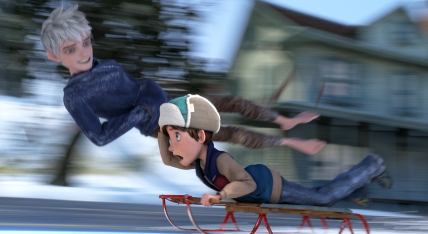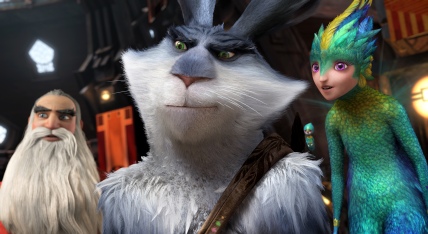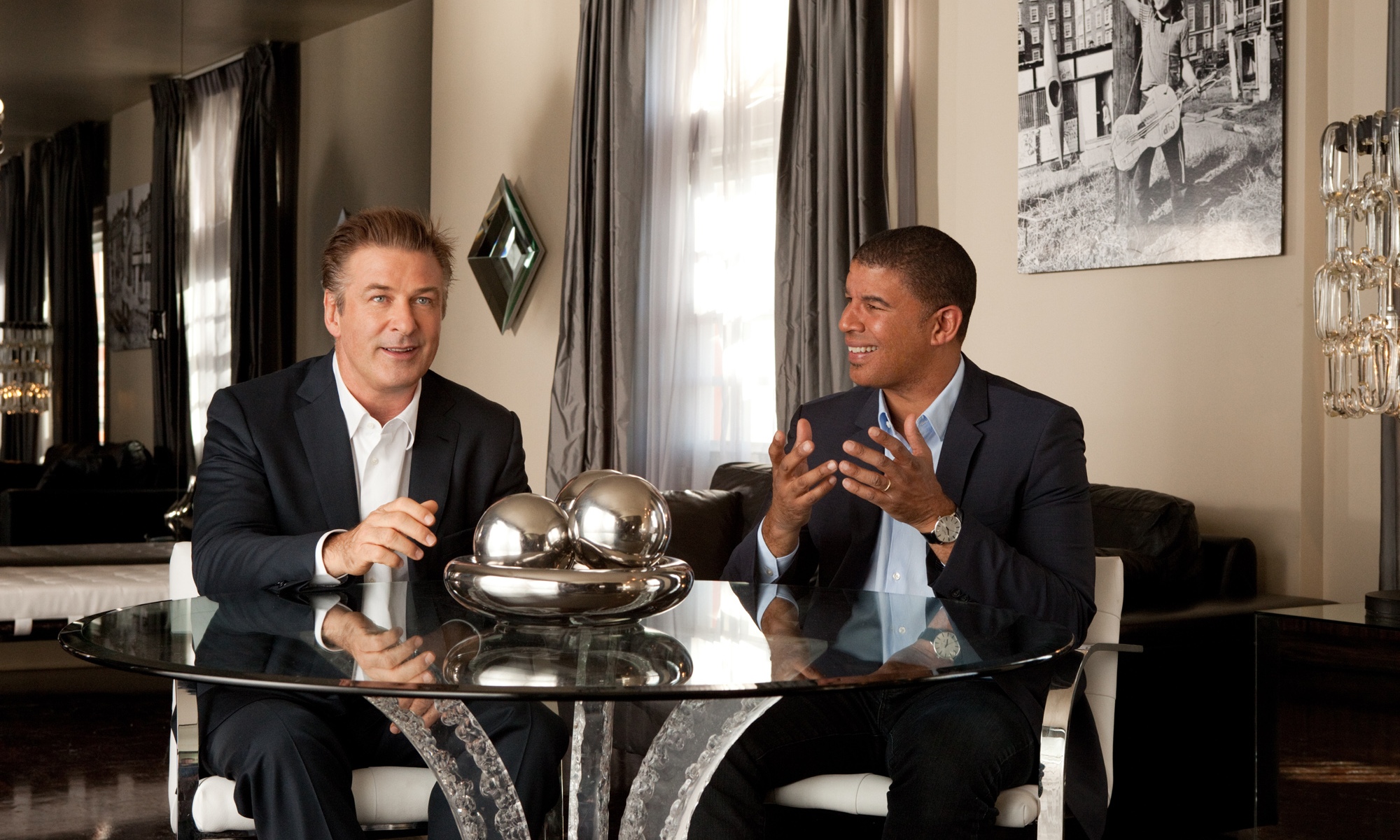Thomas J. McLean is an AwardsLine contributor. This article appeared in the Nov. 28 issue of AwardsLine.
As a child, William Joyce wanted more answers about Santa Claus, the Easter Bunny, and other holiday figures than his parents were able to give him.
“I know where Superman came from—from planet Krypton!—so what about this guy, the Easter Bunny?” says Joyce. The typical parental answer to queries about how Santa Claus and the Tooth Fairy did what they do was, “They just do,” which Joyce found dissatisfying, even years later when he became a father.

“I wanted to come up with something better for my kids,” says Joyce. “And it really galvanized when my daughter asked me one hot August day—after her little brother lost his tooth—‘Do the Tooth Fairy and Santa Claus know each other?’ And I’m like, ‘Yeah!’ ”
Joyce, a celebrated illustrator, children’s book author, and filmmaker, began filling in those blanks, creating detailed backstories and a shared universe robust enough to fill a Guardians of Childhood book series. His imaginative work ultimately provided the foundation for DreamWorks Animation’s hottest contender in this year’s Oscars race, the 3D animated Rise of the Guardians.
It is a project Joyce calls his magnum opus. He directed a Man in the Moon short film as proof of concept, but found himself turning down offers from the likes of Pixar before hearing exactly what he wanted from DreamWorks Animation chief Jeffrey Katzenberg.
“Jeffrey was the only guy from any of the studios who was willing to take on the bigger picture I wanted, which was books and a movie,” says Joyce. “Everybody else just wanted to do a movie, and they didn’t want me to do these books, and that was a deal-breaker for me.”

Joyce’s feature animation credits include concept art for the original Toy Story; he was production designer and producer on Blue Sky Studios’ Robots; and saw Disney adapt one of his books into the animated feature film Meet the Robinsons. For Rise of the Guardians, he came on as codirector but had to step back into an executive producer role when his teenage daughter, Mary Katherine, was diagnosed with a brain tumor. (She died at age 18 in 2010, and Guardians is dedicated to her memory.)
Stepping up to the director’s role was Peter Ramsey, an animation veteran who had just come off directing DreamWorks’ Monsters vs. Aliens Halloween TV special. He joined playwright David Lindsay-Abaire, who wrote the screenplay, production designer Patrick Marc Hanenberger, and producers Christina Steinberg and Nancy Bernstein in developing the project, with input from director Guillermo del Toro.
“A lot of my thinking dovetailed well with what David Lindsay-Abaire was doing, which is not doing a satirical take but actually meeting it head-on and making the core story about the belief in the characters and this new vision of what the characters actually represent and mean,” Ramsey explains.
Del Toro was particularly helpful in restructuring the story, which incorporated an idea Katzenberg pitched to Joyce in their first meeting on the project: to introduce a new Guardian. That crystalized the story around Jack Frost and made children’s belief in these characters the central theme of the story.
Key to Joyce’s take on the characters was the need to treat them seriously and make them cool in a way that decades of bland holiday TV specials could not.
“We knew that we didn’t want to go the postmodern, wink-wink route,” says del Toro. “What we aspired to was to make them feel alive, to make them really have a personality, and that they would have a personality where you as a kid have an option of saying they were cool without sounding childish.”
Most of the characters took their cues from Joyce’s ideas, such as North, a.k.a. Santa Claus, being a swashbuckling Cossack complete with Russian accent and tattoos. The Easter Bunny changed the most, with Joyce adopting the movie’s boomerang-wielding outback warrior for his books over his original idea.
“The Easter Bunny that Bill originally had was something a bit more Beatrix Potter-y and a bit more ‘fussy professor,’ ” Ramsey says. “We just couldn’t pull him off that way, so we decided to keep him a little more in line with our superhero idea.”
Joyce, who launched Moonbot Studios in his native Shreveport, LA, and wrote and codirected the Oscar-winning short The Fantastic Flying Books of Mr. Morris Lessmore, says he was very comfortable with the studio’s approach. “I really felt like the studio and Peter wanted to tell the story that I wanted to tell,” says Joyce. “Then it was easy to stand back.”
Katzenberg was essential in getting the studio’s first choices for casting: Alec Baldwin as North, Jude Law as the villain Pitch, Isla Fisher as Tooth, Hugh Jackman as E. Aster Bunnymund, and Chris Pine as Jack Frost. Voice work was new to Pine, who says the one day he worked directly with Baldwin was surprisingly counterproductive.
“I had all of my actorly hopes that it would help ground the experience, but it really didn’t help,” says Pine. “It actually worked out better, I found, after three years of doing it, to just go section by section by myself and play with the lines and with volume.”
The animators developed different styles of movement for each of the characters. Steinberg says teams were assigned to each character, but by the end of production those styles were so well defined it was second nature for animators to work on any or all of the characters.
“We started calling it ‘method animation’ because we were trying to get as much naturalism into the performances as we could,” Ramsey says.
The look of the film borrowed heavily from Joyce’s illustrations. “Most animated movies drink from the fountain of pop art,” says del Toro. “We wanted to go for a more painterly look and a look that felt like it was based on a production design more in tune with illustrated books of the past, rich and lush and embroidered and detailed.”
Joyce, whose next animated project is the feature Epic, due out next year from Blue Sky Studios, is more than pleased with Guardians and has high hopes for a sequel. “There’s two things that aren’t the way I wanted them to be: I wanted Bunny to have a cape, and I wanted the Tooth Fairy to be a little bustier. But other than that, it’s what I hoped.”

